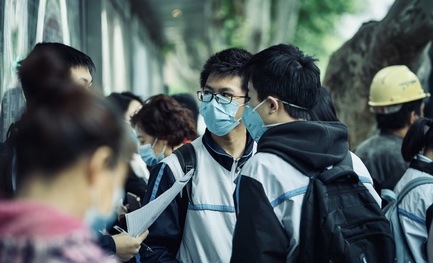Chinese universities are increasing tuition fees by up to 54 percent this year
Hong Liuxing, chinaworker.info
Continued cuts in education funding are pushing fees higher across multiple provinces. The increases will take effect from the start of the new academic year in the autumn. In some cases, these are the first increases for many years. Shanghai’s university fees have been unchanged for 20 years till now.
These outrageous increases reveal the depths of China’s debt and financial crisis. Education spending is mainly financed at local government level, and this is also where debt problems are most acute. The fee increases also represent an ideological signal from Xi Jinping’s regime, to punish students for last year’s unrest and “convince” them to accept lower paid jobs in the midst of a youth jobs crisis – the unemployment rate is officially 20.4 percent among under-25s.
The highest reported fee hike is from Shanghai East China University of Science and Technology, which announced a 54 percent increase to 7,700 yuan (US$1,082) annually. Shanghai Dianji University is also raising fees by 40 percent for STEM subjects (science, technology, engineering and mathematics) and 30 percent for others. Universities in Sichuan and Jilin provinces are also imposing heavy increases, by up to 40 percent. This is in a country with an average income of about 3,850 yuan per month.
Added to this are much higher dormitory rents and the huge costs of private tuition before university. For students from poorer provinces, who already face significant inequality in accessing a university education, this will be an even greater burden.
While these fees are a shocking rise in people’s cost of living, the dictatorship’s cuts to education as a whole are not new. At the height of the pandemic, central government funding for education was cut by 13.7 billion yuan. This year’s cuts of 3.7 percent to tertiary education do not represent the full picture as most university funding comes from cash-strapped local governments.
Wave of protests
A continued assault on students and their livelihoods will merely strengthen the oncoming political revolt. During the pandemic, we already saw a wave of university and high school protests. Student consciousness has transformed from demands against lockdown austerity and terrible hygiene conditions to the hundreds of primarily university students on the streets of Shanghai chanting “Down with the CCP”.
To protest against these immediate price hikes, students should adopt the tactic of student strikes. They should also link up with workers at the university, appealing for them to join the struggle. Fat cat university management will never cut their own pay, choosing to attack staff wages and conditions instead. Demands appealing for improved staff conditions will not only strengthen any potential fightback but also is the best guarantee of quality education for students. As currently, many academics are stuck churning out papers to improve a university’s citation numbers, taking away vital time for preparing lectures and engaging with students.
Of course, the ultimate question we have to ask is: what even is university good for? One in five young people are unemployed. China Tobacco Henan reported that one-third of their new factory floor had postgraduate degrees. With no policies yet announced to fundamentally tackle the youth unemployment crisis, state media has this year ramped up its propaganda.
They have the gall to say young people are “unwilling to engage in jobs that are lower than their expectations”. Xi Jinping openly tells students they should instead “go down into the countryside”. Guangdong Province already has plans drawn up for 300,000 graduates to relocate to rural areas. There, even fewer jobs will be found. One blogger pointed out the absurdity: “On the one hand, we have 293 million rural labourers working in the cities; on the other hand, we arrange 300 thousand students to be sent down to the countryside”.
This is the result of a failed capitalist system, along with university teaching under the jackboot of state repression. Without basic democratic freedoms to discuss, research, and debate, it is no wonder that students are unable to acquire the skills necessary for advanced industry.
Students and working class families are being forced to pay for the regime’s crisis. To remain ‘apolitical’ in any protest actions will leave students unprepared for the significant repression from the authorities.
The regime’s huge debt crisis means they have little means to provide economic sweeteners. Therefore, today’s cuts and fee increases are only the beginning. Naturally, the CCP regime rejects any notion of a socialist approach to deal with the crisis in education and the jobs market. That would require breaking the economic power of the capitalist class, including inside the regime, taking the major companies into democratic public ownership, and establishing a genuine socialist plan of production with full democratic control and political freedoms. Such an alternative will clearly never come from the capitalist CCP regime itself but must come from mass working class struggle.
Ultimately, to fight back against the university fee hikes and the general malaise in the education system, this must be part of a wider struggle against capitalism and dictatorship.




